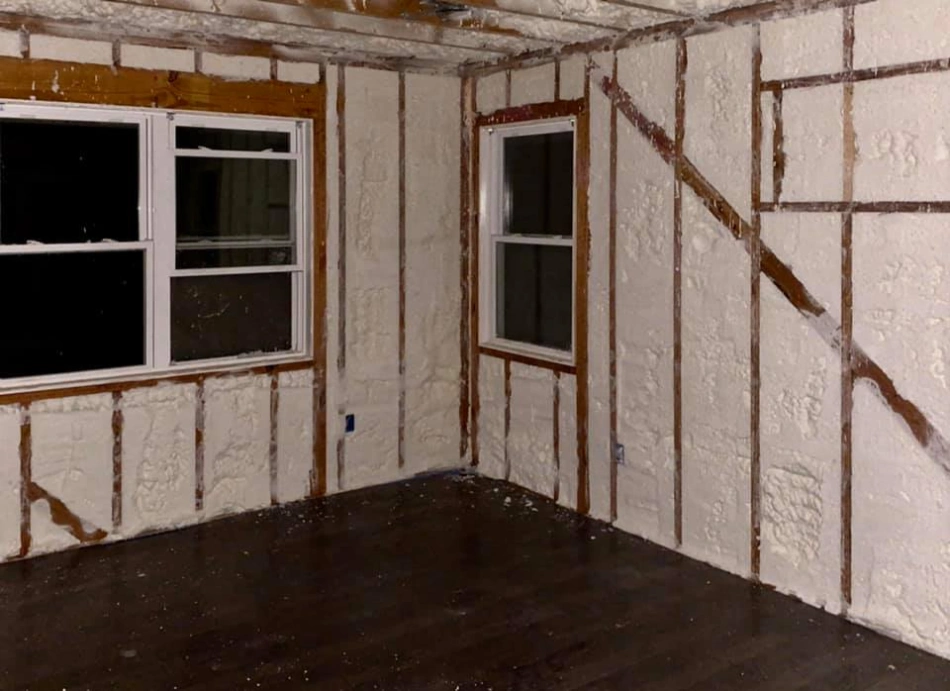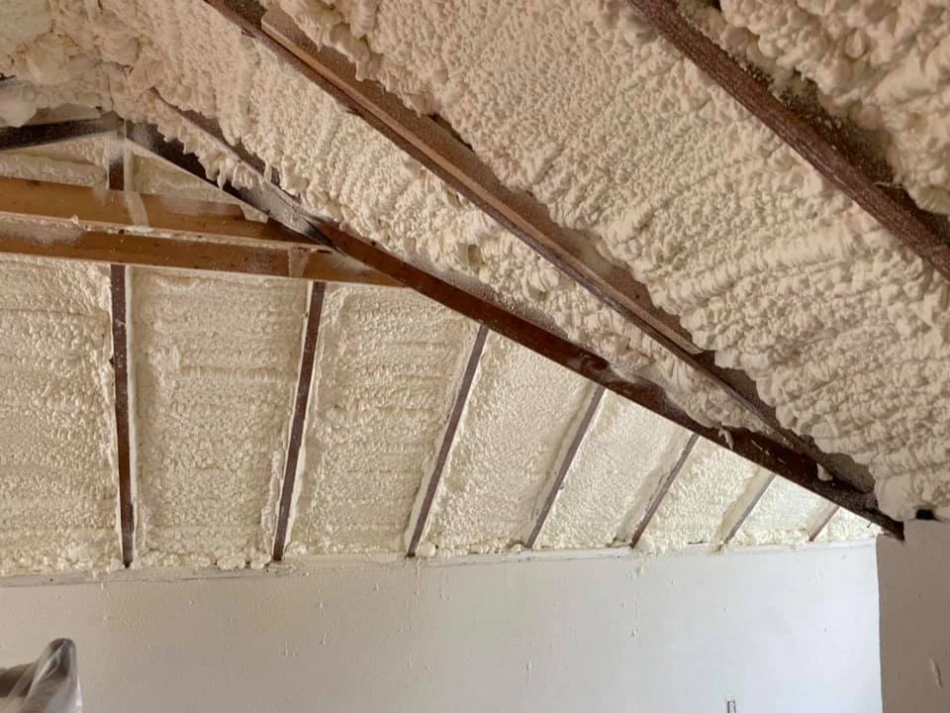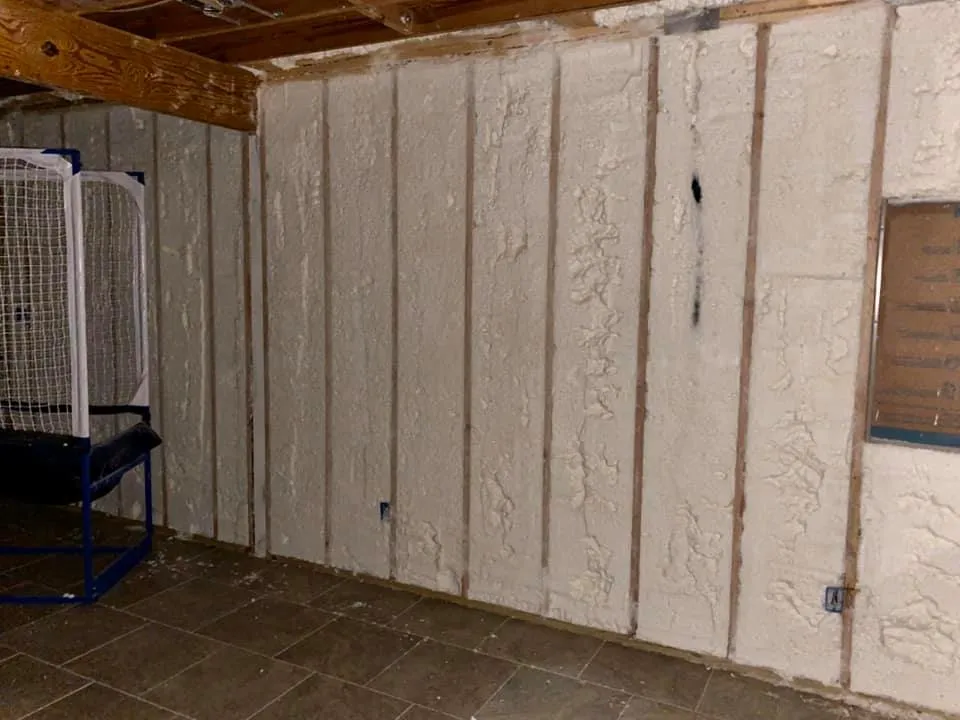Spray foam insulation delivers exceptional long-term value for Belton homeowners through superior energy efficiency, structural reinforcement, and decades-long durability. This advanced insulation technology creates an airtight thermal barrier that reduces energy consumption by 30-50% while strengthening building integrity and maintaining consistent indoor comfort throughout Central Texas’s extreme temperature fluctuations.
The investment in spray foam insulation pays dividends over its 20+ year lifespan through reduced utility bills, improved home value, and enhanced living comfort. Based on extensive field experience with hundreds of Belton installations, properly applied spray foam systems consistently outperform traditional insulation methods in both performance metrics and longevity.
Superior Energy Performance and Cost Savings
Spray foam insulation transforms energy efficiency in Belton homes by creating a continuous thermal barrier that traditional insulation cannot match. The closed-cell formulation expands to fill every gap, crack, and crevice, eliminating thermal bridging that causes energy loss in conventional insulation systems.
Bonus Tip: Monitor your utility bills for the first year after installation to document energy savings. Most Belton homeowners see 35-45% reductions in heating and cooling costs, with peak savings during summer months when HVAC systems work hardest against Texas heat.
Central Texas homes equipped with spray foam insulation in Belton, TX maintain more consistent indoor temperatures while using significantly less energy. The seamless air barrier prevents conditioned air from escaping and outdoor air from infiltrating, reducing the workload on HVAC systems and extending equipment lifespan.
Structural Enhancement and Moisture Protection
Spray foam provides structural benefits beyond insulation through its adhesive properties and moisture resistance. The expanding foam bonds directly to building materials, adding structural rigidity that helps resist wind loads and seismic forces common in Central Texas weather patterns.
The moisture barrier created by closed-cell spray foam prevents condensation buildup that leads to mold growth and structural damage. This protection proves especially valuable in Belton’s humid climate where traditional insulation often fails due to moisture infiltration.
| Insulation Type | R-Value per Inch | Air Sealing | Moisture Barrier | Structural Support |
|---|---|---|---|---|
| Closed-Cell Spray Foam | 6.0-7.0 | Excellent | Yes | Strong |
| Open-Cell Spray Foam | 3.5-4.0 | Good | No | Moderate |
| Fiberglass Batts | 3.1-3.4 | Poor | No | None |
| Cellulose | 3.2-3.8 | Fair | No | None |
Longevity and Maintenance Advantages
Professional spray foam installations maintain their performance characteristics for 20-30 years without degradation, settling, or air gap formation. Unlike traditional insulation that sags and loses effectiveness over time, spray foam retains its original thickness and thermal properties throughout its service life.
The durability of spray foam eliminates recurring insulation replacement costs common with other materials. Fiberglass and cellulose insulation typically require replacement every 10-15 years due to settling and moisture damage, while spray foam maintains peak performance for decades.
Bonus Tip: Schedule annual HVAC filter changes to maximize the longevity benefits of your spray foam system. Clean filters reduce system strain and help maintain the optimal indoor air quality that spray foam’s air sealing provides.
Indoor Air Quality and Comfort Improvements
Spray foam insulation creates a controlled indoor environment by preventing outdoor pollutants, allergens, and humidity from entering living spaces. The airtight seal reduces dust infiltration and maintains consistent humidity levels that traditional insulation cannot achieve.
Temperature consistency throughout the home improves dramatically with spray foam installation. Room-to-room temperature variations decrease significantly, eliminating hot and cold spots that plague homes with conventional insulation systems.
| Performance Metric | Before Spray Foam | After Spray Foam | Improvement |
|---|---|---|---|
| Energy Usage (kWh) | 1,800/month | 1,100/month | 39% reduction |
| Temperature Variation | 8-12°F | 2-3°F | 75% improvement |
| Humidity Control | Poor | Excellent | Significant |
| Air Infiltration Rate | 12 ACH50 | 3 ACH50 | 75% reduction |

Things to Consider Before Installation
Evaluate your home’s current insulation condition and energy performance before selecting spray foam. Homes with significant air leakage or failing insulation systems benefit most from spray foam upgrades, while newer homes with adequate insulation may see diminished returns on investment.
Consider the application area carefully. Attic spaces, crawl spaces, and exterior walls provide the greatest long-term benefits from spray foam installation. Interior applications may offer less dramatic improvements depending on existing insulation conditions.
Climate considerations play a crucial role in spray foam selection. Belton’s hot, humid summers and moderate winters favor closed-cell formulations for maximum moisture protection and thermal performance, though open-cell options work well in specific applications.
Bonus Tip: Plan spray foam installation during moderate weather conditions (spring or fall) for optimal curing and application conditions. Extreme temperatures can affect the foam’s expansion and adhesion properties.
Professional Installation Services Stellrr Provides
- Residential Spray Foam Insulation: Complete home insulation solutions using premium closed-cell and open-cell formulations tailored to Central Texas climate conditions.
- Attic Insulation: Comprehensive attic sealing and insulation services that address thermal bridging and air leakage common in traditional insulation systems.
- Crawlspace Insulation: Specialized crawl space encapsulation combining moisture control with superior thermal performance for enhanced home comfort.
- Insulation Removal: Professional removal of failing or contaminated insulation materials before spray foam installation to ensure optimal performance and longevity.
Common Installation Questions
What preparation work is required before spray foam installation?
Remove existing insulation if it’s damaged or contaminated, seal major air leaks around plumbing and electrical penetrations, and ensure adequate ventilation in application areas. Professional installers handle most preparation work as part of the installation process.
How long does spray foam take to cure completely?
Initial curing occurs within minutes, but full cure takes 24-48 hours depending on temperature and humidity conditions. Avoid disturbing the foam during this period to ensure proper adhesion and performance.
Can spray foam be applied over existing insulation?
In most cases, existing insulation should be removed to achieve optimal performance. Spray foam works best when applied directly to building surfaces, creating the most effective air seal and thermal barrier.
Key Performance Considerations
Understanding spray foam’s performance characteristics helps homeowners make informed decisions about insulation upgrades. The initial investment in spray foam typically recovers through energy savings within 3-5 years, followed by decades of continued savings and performance benefits.
Consider your home’s specific needs when selecting between open-cell and closed-cell formulations. Closed-cell spray foam provides maximum thermal performance and moisture protection, while open-cell offers sound dampening benefits at a lower material cost.
Professional installation ensures optimal performance and longevity. Experienced installers understand proper mixing ratios, application techniques, and environmental factors that affect spray foam performance in Central Texas conditions.
Get Professional Spray Foam Installation
Transform your Belton home’s energy efficiency and comfort with professional spray foam insulation. Stellrr specializes in residential and commercial spray foam applications throughout Central Texas, delivering proven results that reduce energy costs and enhance home performance for decades.
Contact Stellrr at (512) 710-2839 or info@stellrr.com to schedule a comprehensive insulation evaluation. Our experienced team provides detailed assessments and customized recommendations based on your home’s specific needs and performance goals.
Essential Information About Spray Foam Benefits
How long do the energy savings from spray foam last?
Energy savings from properly installed spray foam insulation continue for 20-30 years without degradation. Unlike traditional insulation that loses effectiveness over time, spray foam maintains its thermal properties throughout its service life, providing consistent energy cost reductions year after year.
Does spray foam insulation increase home resale value?
Yes, spray foam insulation typically increases home value by 3-5% while making properties more attractive to buyers focused on energy efficiency. Real estate professionals report that homes with spray foam insulation sell faster and command higher prices due to documented energy performance benefits.
What maintenance does spray foam insulation require?
Spray foam insulation requires virtually no maintenance once properly installed. Regular HVAC system maintenance and filter changes help maximize the air quality benefits, but the foam itself maintains its performance characteristics without intervention for decades.
Can spray foam help with noise reduction in homes?
Open-cell spray foam provides excellent sound dampening properties, reducing noise transmission between rooms and from outside sources. Closed-cell foam offers moderate sound reduction while prioritizing thermal performance and moisture protection.
How does spray foam perform during extreme Texas weather?
Spray foam excels in Texas’s extreme temperature variations, maintaining consistent thermal performance from sub-freezing winter conditions to 100°F+ summer heat. The material’s stability and air-sealing properties provide reliable protection against weather-related energy loss and comfort issues.





